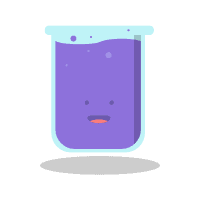
TEKS Grade 8 Science - 8.9 Plate Tectonics
Quiz by Grade 8 Science - Texas Education Agency
Grade 8
Science (2017)
Texas Essential Knowledge and Skills (TEKS)
Feel free to use or edit a copy
includes Teacher and Student dashboards
Measures 1 skill from
Measures 1 skill from
Track each student's skills and progress in your Mastery dashboards
With a free account, teachers can
- edit the questions
- save a copy for later
- start a class game
- automatically assign follow-up activities based on students’ scores
- assign as homework
- share a link with colleagues
- print as a bubble sheet
11 questions
Show answers
- Q1The model below shows two continental plates. The folded mountains in this model form at which type of plate boundary?Divergent boundaryTransform boundarySubduction boundaryConvergent boundary60s8.9b
- Q2The thick black lines on the map below show the locations of mid-ocean ridges. Which geologic feature is most likely to form at a mid-ocean ridge?PeninsulaDeltaVolcanoPlateau60s8.9b
- Q3The image shows a plate boundary. Arrows have been added to indicate the movement of the plates. What plate boundary feature is also shown?A valley forming at an active divergent boundaryA fault forming at an active transform boundaryA ridge formed by an inactive convergent boundaryA volcano formed by an active transform boundary60s8.9b
- Q4The map below shows the locations of four active volcanoes in the Caribbean Sea. What do these volcanoes indicate about plate tectonics in the region?The volcanoes form a line, indicating a diverging plate boundary.The volcanoes form an island arc, indicating a converging plate boundary.Two plates are moving apart, creating new seafloorTwo plates are moving past each other, causing faulting and magma formation.60s8.9b
- Q5Rift valleys can form when fractures in Earth’s crust widen. The valley walls slowly move at a rate of only a few millimeters a year. Which of these best describes the type of tectonic activity that forms rift valleys?Rift valleys form where two plates move away from each other.Rift valleys form where a continental plate moves under an oceanic plate.Rift valleys form where a plate slides horizontally past another plate.Rift valleys form where an oceanic plate moves under another oceanic plate.60s8.9b
- Q6The map shows some of Earth’s plate tectonic boundaries. Based on the map, volcanic activity would most likely be found at —Location XLocation WLocation YLocation Z60s8.9b
- Q7The diagram below shows a model of the movement of two tectonic plates. When the plates collide, one plate often moves below the other plate. The rising magma that can result from this type of plate movement may produce —fossil layersdeep-sea sedimentseafloor spreadingvolcanic islands60s8.9b
- Q8The Himalayan mountains are shown on the map below. Four students were asked to identify the geologic process that caused this mountain range to form. Their responses are shown below. Which student correctly identified the geologic process that formed the Himalayan mountains?Student 3Student 1Student 2Student 460s8.9b
- Q9The San Andreas fault is a transform fault. The map below shows a student’s approximation of where the fault line crosses through the United States. Students were asked to make maps predicting which way land would most likely move over thousands of years. Which map best predicts the likely movement of land along the fault line over thousands of years?#texas/6aa7ae5c-5775-40a6-9f3c-597e8e2975db/D.png#texas/6aa7ae5c-5775-40a6-9f3c-597e8e2975db/B.png#texas/6aa7ae5c-5775-40a6-9f3c-597e8e2975db/A.png#texas/6aa7ae5c-5775-40a6-9f3c-597e8e2975db/C.png60s8.9b
- Q10A mid-ocean ridge separates the Pacific plate and the Nazca plate off the western coast of South America. Which statement best describes the relative motions of the Pacific and Nazca plates?The Pacific plate is moving to the east, and the Nazca plate is moving to the west.The Pacific and Nazca plates are both moving to the west.The Pacific and Nazca plates are both moving to the east.The Pacific plate is moving to the west, and the Nazca plate is moving to the east.60s8.9b
- Q11Scientists recently discovered that rocks collected from the Franklin Mountains in West Texas and rocks collected from mountains in eastern Antarctica were exactly the same age. Further research showed that the rocks were chemically and geologically the same and came from the same magma source. This discovery provides evidence of —glacial meltingplate tectonicscoastal erosionocean currents60s8.9b
